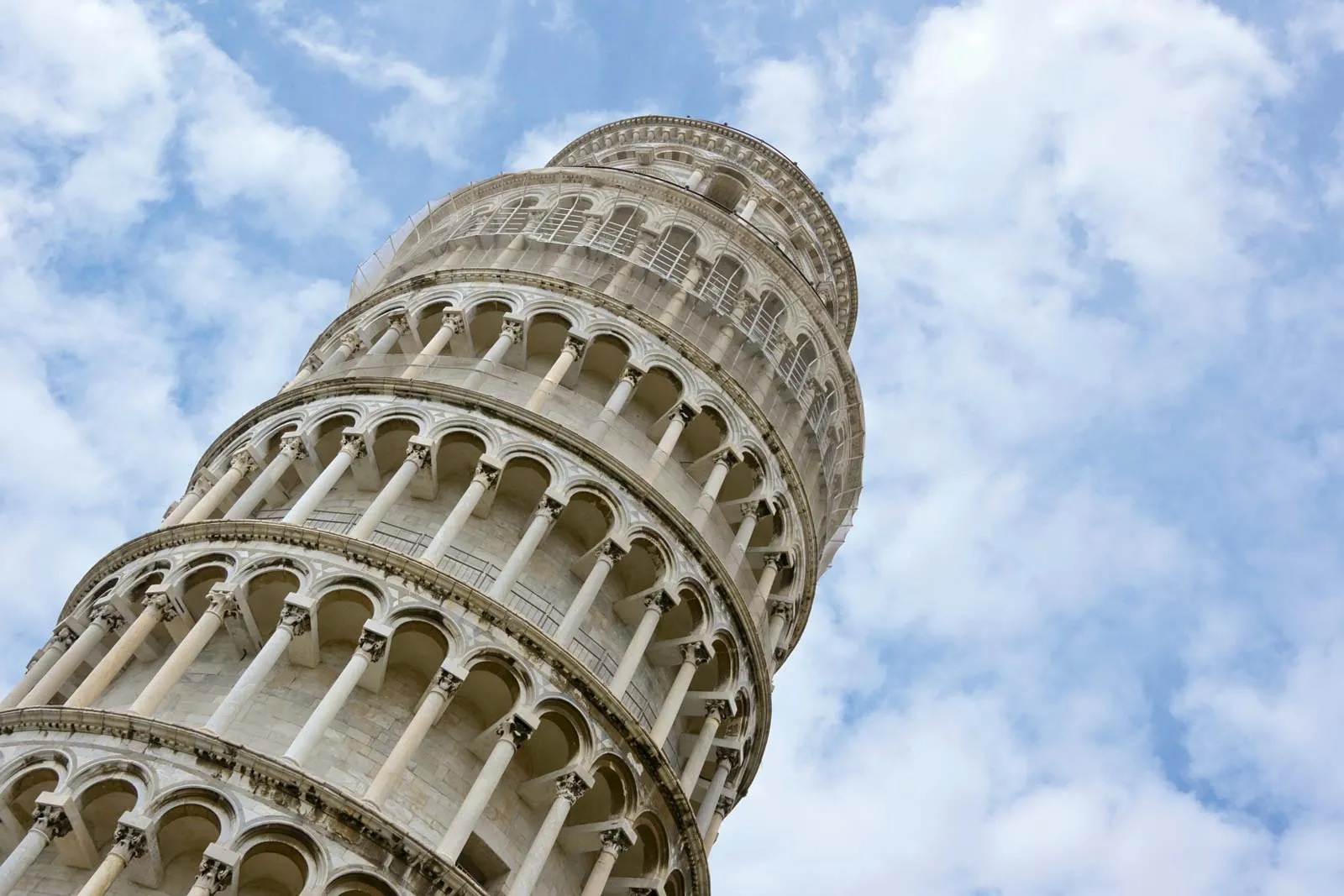
The Leaning Tower of Pisa is considered one of the most important urban and tourist landmarks in Italy, as it is visited by a large number of tourists every year, especially as it has remained steadfast over the past decades despite its obvious tilt. Its tilt has always been astonishing to everyone who has seen it, so the question has never stopped asking why. The tower remains standing without falling to this day, and experts and engineers have provided many explanations explaining why the tower did not fall, and this is what we will talk about in our article.
How old is the Leaning Tower of Pisa?
The Leaning Tower of Pisa is 850 years old, as it was built in the year 1173 AD. The height of the tower on its low side reaches 55.86 meters, while on its high side its height reaches 56.67 meters, while the width of the tower’s walls at the base reaches about 2.44 meters, with a weight of It is estimated to be 14,500 tons. The tower began to bend in the twelfth century after the completion of construction, as its inclination reached 5.5 degrees, but with the restoration and repair of the tower to adjust the large tilt, its structure was stabilized through remedial work in the years extending from 1993 AD until 2001. This caused a decrease in the degree of inclination, which eventually reached 3.97 degrees.
Facts about the Leaning Tower of Pisa
There are many facts that can be mentioned when talking about the Leaning Tower of Pisa, and below we review the most prominent of these facts:
- It took about 199 years to build the tower. After construction began in 1173 AD, construction stopped twice, including a 100-year hiatus.
- The tower was built with a thick clay mixture that was not enough to remain upright, and this was not discovered until the second floor was completed.
- The weight of the tower reaches 14,500 tons, and it consists of 8 floors, including the bell room in which there are 7 bells, each with a different musical tone.
- The upper part of the tower is considered the most vertical part of the tower, and it extends up to a distance of 4 meters.
- Expectations did not stop about the tower’s inability to withstand due to its constant tilt, but the engineers were able to prevent its fall after they succeeded in reducing the degree of its tilt.
- Experts’ forecasts indicate that the tower will remain in this state for another 300 years, and they also indicate that technological developments can be used to keep it standing for about an additional 800 years.
- Just one earthquake that struck the region could cause severe catastrophic consequences for the tower and its surroundings, especially the cathedral and the baptistery.
- A project was initiated to support the stability of the tower, which lasted for 11 years. This project effectively contributed to reducing the tower’s inclination by 15 inches.
- During the 20 years that followed the stabilization project, the tower straightened itself by another 1.6 inches.

Reasons why the Leaning Tower of Pisa did not fall
It was not an easy matter, as the engineers and experts made great efforts to prevent the Tower of Pisa from collapsing, and this was by reducing the degree of the tower’s inclination, which they succeeded in doing after failing to straighten the structure by applying some strategies. The effective experiment through which they succeeded was “ Extracting soil. This was done by digging two loads under the tower, specifically from its northern side, and they pulled the tower upright.
Although this method was effective in reducing the degree of the tower’s inclination, the engineers discovered that the building deflected more during the winter rains, due to the high water level under its northern side, which forced them to dig drains for the water to flow from the bottom of the tower to the wells. They succeeded in this and were able to maintain the stability of the tower’s foundations, while the project to straighten the tower was completed in 2001 AD, after the team succeeded in straightening the tower by 0.5 degrees, which contributed to the continued standing of the tower to this day.
In conclusion, the Leaning Tower of Pisa remains one of the wondrous phenomena of our current era, and thousands of tourists visit it annually to take pictures in specific and different positions that make them appear as if they are supporting the tower from its tilted side. As for the structural level, the tower has been a source of concern for engineers over the past decades, before they succeeded in You corrected it and made it exist to this day.